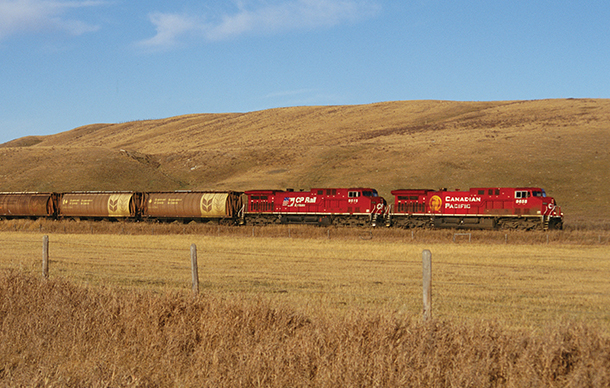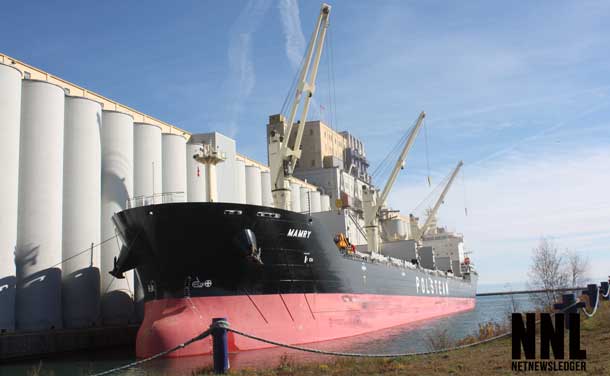
THUNDER BAY – The Port of Thunder Bay has had a banner year in transporting grain. Part of that expanded tonnage came about after last year’s bumper crop resulted in fewer grain cars being available to ship grain from the Canadian Prairies to markets.
The Port of Thunder Bay reports, “As of the end of October 2014, grain shipments 73% higher than last year at the same point”.
Transport Minister Lisa Raitt and Agriculture Minister Gerry Ritz today announced that minimum grain volume requirements will be extended until March 28, 2015. This measure, initially introduced in March 2014, will help to maintain Canada’s reputation as a reliable supplier to world markets:.

The government has put in place volume requirements that are designed to move the remainder of last year’s crop along with this year’s crop and ensure that the grain supply chain will return to normal operations. Ministers expect railways to provide reliable and predictable service to all shippers, all destinations, and throughout all corridors, as is their obligation as common carriers.
Under the new Order in Council, which takes effect on November 30, 2014, Canadian National Railway Company and Canadian Pacific Railway Company must each move the following amounts of grain:
|
Time period |
Metric tonnes per week |
|
Nov. 30, 2014 to Dec. 20, 2014 |
345,000 |
|
Dec. 21, 2014 to Jan. 3, 2015 |
200,000 |
|
Jan. 4, 2015 to Feb. 21, 2015 |
325,000 |
|
Feb. 22, 2015 to Mar. 21, 2015 |
345,000 |
|
Mar. 22, 2015 to Mar. 28, 2015 |
465,000 |
The Order maintains direct legal obligations on railways to move grain and could result in penalties for non-compliance of up to $100,000 per violation. The requirement for railways to report on demand and volume remains in effect.
“Our government continues to act to ensure that grain and all commodities get to market in a timely manner. We continue to call on all parties in the grain supply-chain to work together to ensure the efficient movement of grain to markets through the winter,” stated Agriculture Minister Gerry Ritz.
To further support the efficiency of the grain supply chain, the government expects both Canadian National (CN) and Canadian Pacific (CP) railways to submit formal winter contingency plans to the Government of Canada. This is to include service plans for producer car loaders and short line railways for the remaining crop year.
In order to expand transparency in the logistics system, railways are also expected to provide information on car order fulfillment by corridor, including the placement of rail cars at producer car loading sites and along short line railways to the Grain Monitor.
The government continues to call on all parties in the grain supply chain to work together to develop solutions to ensure the timely movement of grain.
Quick Facts
- On March 7, 2014, the government introduced an Order in Council (OIC) for a period of 90 days, to set out minimum volumes of grain to be moved by CN and CP each week, and requiring the railways to report on those weekly shipments.
- The Fair Rail for Grain Farmers Act, enacted in May 2014, extended the minimum volume requirements of 500,000 metric tonnes per week to the end of the 2013-14 crop year.
- On August 1, a second OIC was introduced requiring CN and CP to each move 536,250 metric tonnes of grain per week until November 29, 2014. Regulatory changes were also introduced to facilitate better monitoring of the overall performance of the rail-based grain supply chain, to clarify the operational terms in service level agreements and to increase competition among railways by extending the limit for rail interswitching in the Prairie provinces.
- The total grain supply for the 2014-15 crop year is estimated to be 71.8 million metric tonnes; this includes a crop estimated at 56.4 million metric tonnes and a carry-over from the 2013-2014 crop year of approximately 15.4 million metric tonnes.






